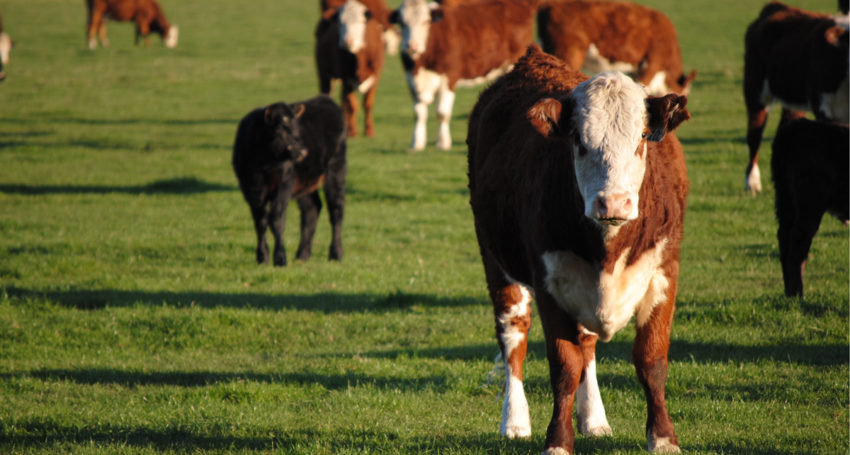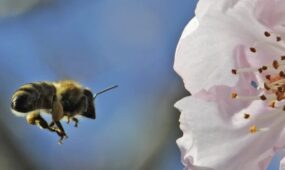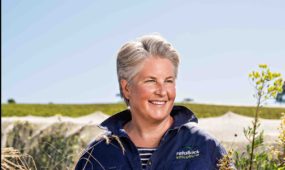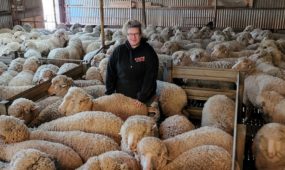Beefed up livestock industry meets rising demand
Primary Industries
Establishing multiple paths to market is key to maintaining livestock industry through COVID-19, according to Livestock SA chief executive Andrew Curtis.

Sign up to receive notifications about new stories in this category.
Thank you for subscribing to story notifications.

In a year of uncertainty, the Australian livestock industry is holding its own in export markets and agribusiness prices are rising across the sector with agribusiness Elders’ share price jumping more than 10 per cent in the past month.
Livestock SA chief executive Andrew Curtis said exports to South Australia’s largest overseas markets in the United States and China are remaining stable as producers use less risky ship transport rather than airfreight grounded by COVID-19 restrictions.
But there is still caution going forward as the COVID-19 pandemic prompts the industry to swiftly invest in more forward planning to guard against further disruptions to the supply chain.
Premium meat suppliers reliant on directly supplying high-end restaurants for example have been forced to find new markets after social distancing rules shut doors.
Curtis said planning was also underway to prepare for an expected shortage of shearers when demand for contractors rises in spring if travels bans are still in place preventing seasonal workers from New Zealand making their annual trip.
Wool producers were discussing options, he said, including bringing the spring shearing season forward in South Australia and working with other states to stagger demand to ensure farms could find enough help.
“The industry is running quite well. There’s still a demand for our product. There’s been some shift with an increase in retail sales domestically and most farms are operating well,” Curtis said.
“Supermarket sales are up about 30 per cent for all meat. There are challenges – there are a number of premium products that are food service-focused and the food service doesn’t exist.
“Where there is more than one path to market, things are going well.”
The red meat and wool industry is South Australia’s largest manufacturing employer, supporting 30,000 jobs.
More than 11 million sheep, 950,000 head of cattle and 57 million kilograms of wool are produced annually in the state with a total production and processing revenue of $2.4 billion.
However, drought across parts of the state and bushfires in Kangaroo Island have affected the amount of lamb that farmers are able to supply to the market as flock sizes are down.
“One of the heads of the state’s largest processors, his comment was they are coping with COVID, the challenge is supply which is drought-related, there’s not enough sheep around,” Curtis said.
“And this is happening as demand for lamb is rising. Many people who might have had lamb when they were out at a restaurant are now buying it and having it when they are home.”
Good rainfall across the state in the past few days have been timely as cereal growers prepare for seeding.
Curtis said the weather bureau outlook promised a better year for rain after below average years in 2018 and 2019.
This is good news for pasture and hay production, particularly for northern regions of the state and Eyre Peninsula on its west coast where farmers have been hardest hit by drought.
In contrast, the South-East of the state is home to about half of the state’s flock and this region has continued to receive solid rainfall and is still providing strong sales in lamb.
“It is looking like a more normal season which is good but there are a heap of ‘who knows’?” Curtis said.
“We had an annual meeting in Robe in the South-East on February 7 and everything was relatively positive, good spring and summer wool prices, sound sheep market and cattle prices were strong.
“If we had the same meeting now there’s a bit more hesitation, we just don’t know how it will play out.”
Some concern has been raised about fertiliser and chemical supplies being affected by COVID-19 restrictions as farmers seed pasture and crops but Curtis said at this stage there was enough supply in the system.
“We would expect people will be sowing into May and June when there’s big demand for fertiliser as part of the process,” Curtis said.
“The feedback we’ve had from our fertiliser producers and importers is they have enough and can access enough product. Their concern in certain areas is where people hoard and do the toilet paper thing.”
Some fertiliser companies were already taking precautions against this happening by limiting orders.
When it came to exports, most of the South Australian product used ships and there was still access but airfreight to Malaysia and the Middle East had been more challenging.
Livestock SA is working with the National Farmers Federation and the state’s Primary Industries and Regions SA department to provide advice around COVID-19 and to help with forward planning, Curtis said.
Jump to next article



